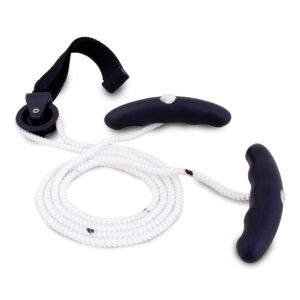Rehab & Exercise
- Orthopedic
- Stretching
- Rehab & Exercise
Frequently Asked Questions
What types of equipment are commonly utilized in physical therapy sessions?
Physical therapy equipment falls into six general categories, encompassing exercise equipment for cardio and strength training, massage tools, topical pain relief aids, educational materials, and stability tables. In addition to these, physical therapists typically outfit their offices with various pieces of furniture, including chairs, shelving, desks, computers, and massage tables. The specific equipment employed can vary based on the therapist’s preferences and the unique medical or therapeutic requirements of each patient.
How are rehabilitation tools defined, and what role do they play in physical therapy?
The array of rehabilitation tools employed hinges on the individual’s condition and the specifics of their physical therapy regimen. Common rehabilitation supplies encompass exercise bands, tubing, and balls, which aid in targeting and rehabilitating specific body parts post-injury. Other tools include wobble boards for enhancing mobility, balance, and overall body conditioning, as well as cushions and Swiss balls. In some cases, more advanced physical therapy supplies like muscle stimulators and TENS machines may be utilized. Cardio equipment, such as treadmills and stationary bikes, may also be incorporated to introduce aerobic exercises into the rehabilitation program.
What kinds of exercises are typically integrated into physical therapy sessions?
Physical therapy exercises are crafted to enhance flexibility and function, alleviate pain, and build strength. Tailored to address injuries or chronic conditions, these exercises cover a range of activities, including:
– Range of motion exercises
– Balance training
– Strength training
– Progressive resistance training
– Aerobic conditioning
– Upper extremity exercises (utilizing specialized equipment)
– Lower extremity exercises
Can physical therapy be conducted at home?
Indeed, physical therapy can extend to the home setting. Home-care physical therapy involves a therapist visiting the patient’s residence to administer rehabilitation and treatment. This service is especially beneficial for individuals unable to leave their homes due to their condition. While adjustments are made to accommodate the living arrangement, the availability of equipment may be limited. As an alternative, individuals can explore physical therapy exercise equipment for sale to ensure comprehensive at-home treatment.
How frequently should one engage in physical therapy exercises?
The frequency of physical therapy exercises varies based on the individual’s treatment plan. Relying solely on in-office sessions may impede the full recovery process and potentially lead to additional complications. To optimize treatment efficacy, it is advisable to perform physical therapy exercises at home between three and five times per week, ensuring they are executed safely. Investing in rehabilitation supplies, such as exercise bands or light weights, can enhance the benefits of these exercises.
What defines a physical therapy kit, and how is it utilized?
A physical therapy kit is a curated collection of items designed to facilitate therapy sessions conducted by physical therapists and students. Serving as a comprehensive starting point, these kits typically include essential supplies like stethoscopes, heart rate monitors, blood pressure monitors, tape, oxygen level monitors, and similar items. They prove invaluable in both educational settings and when working with patients, providing convenient access to the necessary tools for effective physical therapy sessions.












